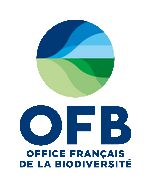According to the overview produced by Tourneur and Marchandeau (ONCFS, 1996) :
![]() Hedgerows consisting of varied species of trees, shrubs and grasses provide the vertebrates that frequent them with :
Hedgerows consisting of varied species of trees, shrubs and grasses provide the vertebrates that frequent them with :
![]() A structure offering varied food sources,
A structure offering varied food sources,
![]() A structure offering varied forms of shelter, in which to reproduce, rest and take refuge from predators or the miscellaneous threats presented by the environment,
A structure offering varied forms of shelter, in which to reproduce, rest and take refuge from predators or the miscellaneous threats presented by the environment,
![]() A linear structure encouraging movement by individual animals (corridors), which may contribute to the survival of populations organised as meta-populations (Burel, 1990 – 1984 – Lodé, 1991A – Paillet & Butet, 1994 6 Saint-Girons et al. 1986),
A linear structure encouraging movement by individual animals (corridors), which may contribute to the survival of populations organised as meta-populations (Burel, 1990 – 1984 – Lodé, 1991A – Paillet & Butet, 1994 6 Saint-Girons et al. 1986),
![]() An "edge" area, where hedges and a range of crops interpenetrate over long distances. "Edge effects" (Frochot & Lobreau. 1987), often sought after by wildlife, are characterised by sharp gradients in ecological factors; a wide variety of exchanges take place along the frontier (ecotones) between the two types of terrain. Indeed, a hedgerow itself is a double edge.
An "edge" area, where hedges and a range of crops interpenetrate over long distances. "Edge effects" (Frochot & Lobreau. 1987), often sought after by wildlife, are characterised by sharp gradients in ecological factors; a wide variety of exchanges take place along the frontier (ecotones) between the two types of terrain. Indeed, a hedgerow itself is a double edge.
![]() A hedge provides shelter and food for a host of animals from all zoological groups (mammals, birds, reptiles, amphibians, molluscs, insects, microorganisms, etc.), on all colonisation levels (ground, bed of leaves or humus, foliage, stems, trunks and high branches), and with all forms of feeding (detritivores, herbivores, granivores, insectivores and carnivores). As explained by Saint-Girons (1952), "the key feature of bocage, from a wildlife perspective, is the rarely-found combination of shelter (earth banks covered with dense vegetation and permanent underground burrows) and plentiful reserves of food provided by crops."
A hedge provides shelter and food for a host of animals from all zoological groups (mammals, birds, reptiles, amphibians, molluscs, insects, microorganisms, etc.), on all colonisation levels (ground, bed of leaves or humus, foliage, stems, trunks and high branches), and with all forms of feeding (detritivores, herbivores, granivores, insectivores and carnivores). As explained by Saint-Girons (1952), "the key feature of bocage, from a wildlife perspective, is the rarely-found combination of shelter (earth banks covered with dense vegetation and permanent underground burrows) and plentiful reserves of food provided by crops."
![]() However, another significant characteristic of bocage is the absence of wildlife specific to that particular habitat (the same applies to plants); the fact that this agro-ecosystem has emerged only recently has prevented inbreeding. Nevertheless, three features are worthy of note, given that the specificity of this environment derives from their co-existence :
However, another significant characteristic of bocage is the absence of wildlife specific to that particular habitat (the same applies to plants); the fact that this agro-ecosystem has emerged only recently has prevented inbreeding. Nevertheless, three features are worthy of note, given that the specificity of this environment derives from their co-existence :
![]() Species richness, which enables hedges to play an important role in biodiversity :
Species richness, which enables hedges to play an important role in biodiversity :
They are a melting pot for species from a wide variety of biotopes, including woodland, marshes, moors and open fields. This immediately becomes apparent when one considers the variety of habitats found in a bocage landscape, together with its significant edge effects. Nevertheless, hedges may offer good living conditions for a particular species without it actually being present, due to its isolation from sources of propagules;
Species diversity :
This is undoubtedly the most obvious characteristic. Numerous species are found here, in most cases without being particularly abundant or particularly rare. This trait is specific to mixed landscapes, in contrast to single-crop, open field-based agrosystems and single-species forests;
Balance of species :
This characteristic derives from the previous two, being the result of the interactions between animals. Although cyclical fluctuations in population densities are not unheard of, they rarely occur on the scale observed in other systems. This role is most pronounced where there is the greatest diversity of species, and hence the most complex food chains (as in long-established hedges comprising native species). The hedgerow, situated at the interface between several habitats, is an ideal crossing point, sanctuary and place of exchange for wildlife. In addition, hedges form a connective fabric that facilitates animal movements.
![]() Clearly, hedges play a fundamental biological role, and it is easy to demonstrate that the diversity of species living in a hedgerow safeguards not only the hedge’s biological activity (with each animal finding food and shelter) but also its aesthetic appearance. Hedges also influence their environment. This additional role is indissociable from their biological function, whether with regard to the local or regional climate, water resources or the economy (Coutel, 1992 – Gaury, 1987 – Laugley-Danysz, 1984).
Clearly, hedges play a fundamental biological role, and it is easy to demonstrate that the diversity of species living in a hedgerow safeguards not only the hedge’s biological activity (with each animal finding food and shelter) but also its aesthetic appearance. Hedges also influence their environment. This additional role is indissociable from their biological function, whether with regard to the local or regional climate, water resources or the economy (Coutel, 1992 – Gaury, 1987 – Laugley-Danysz, 1984).
































